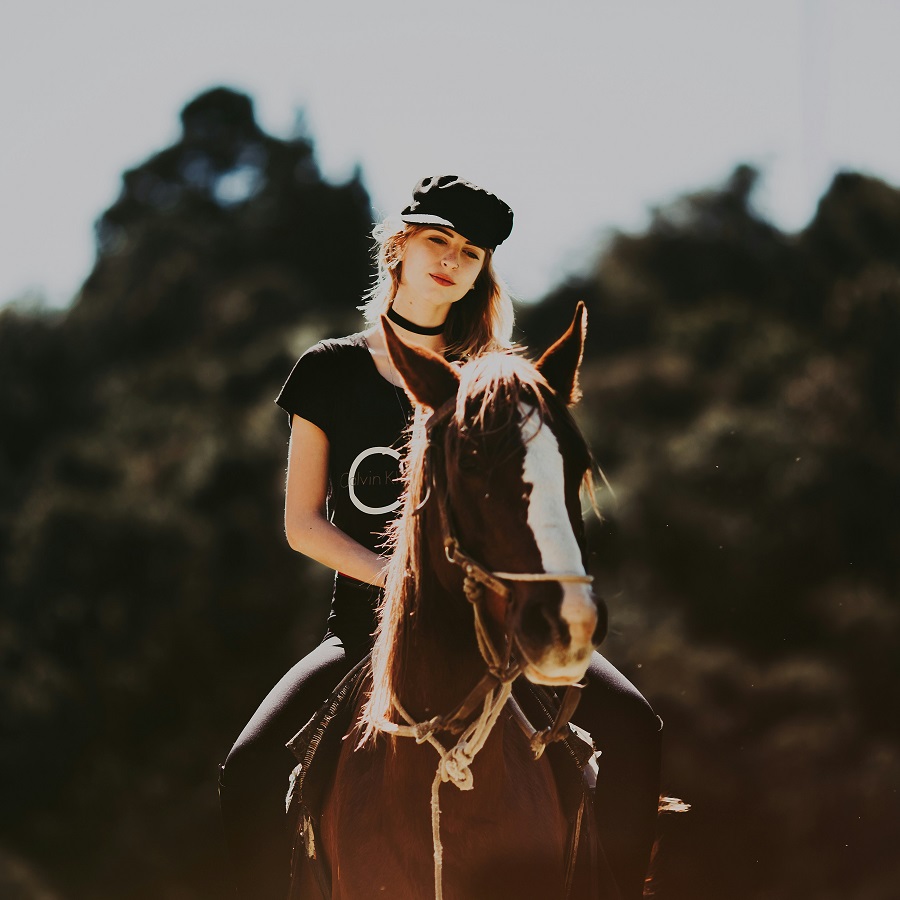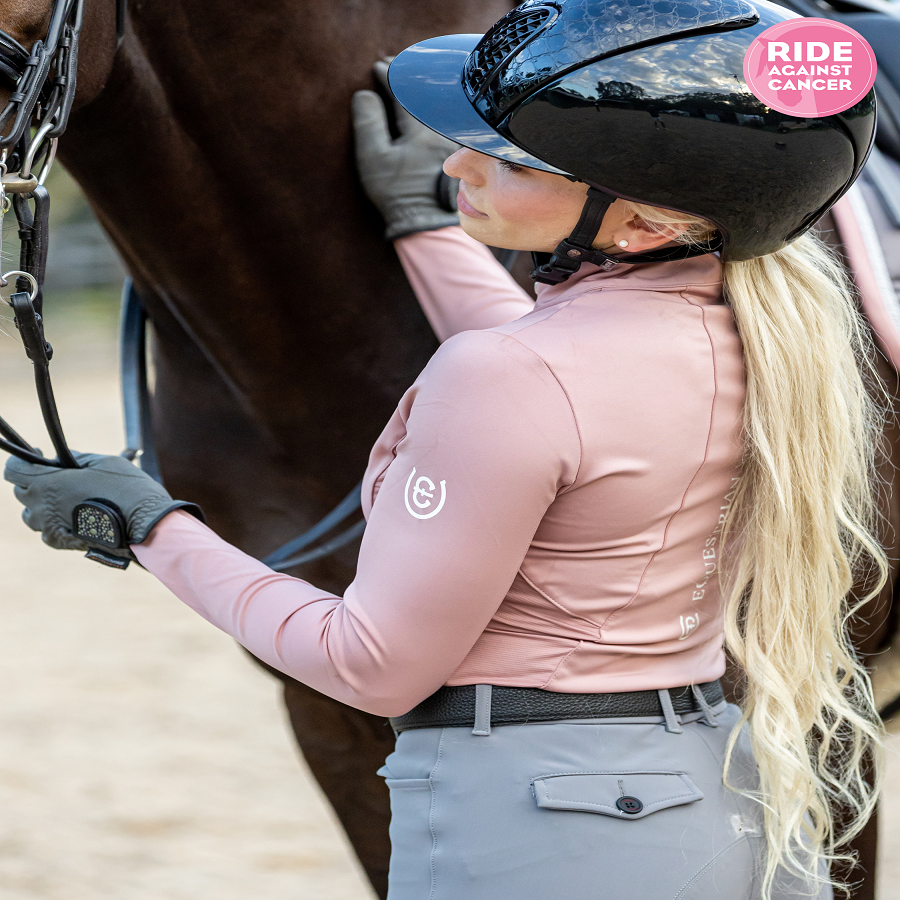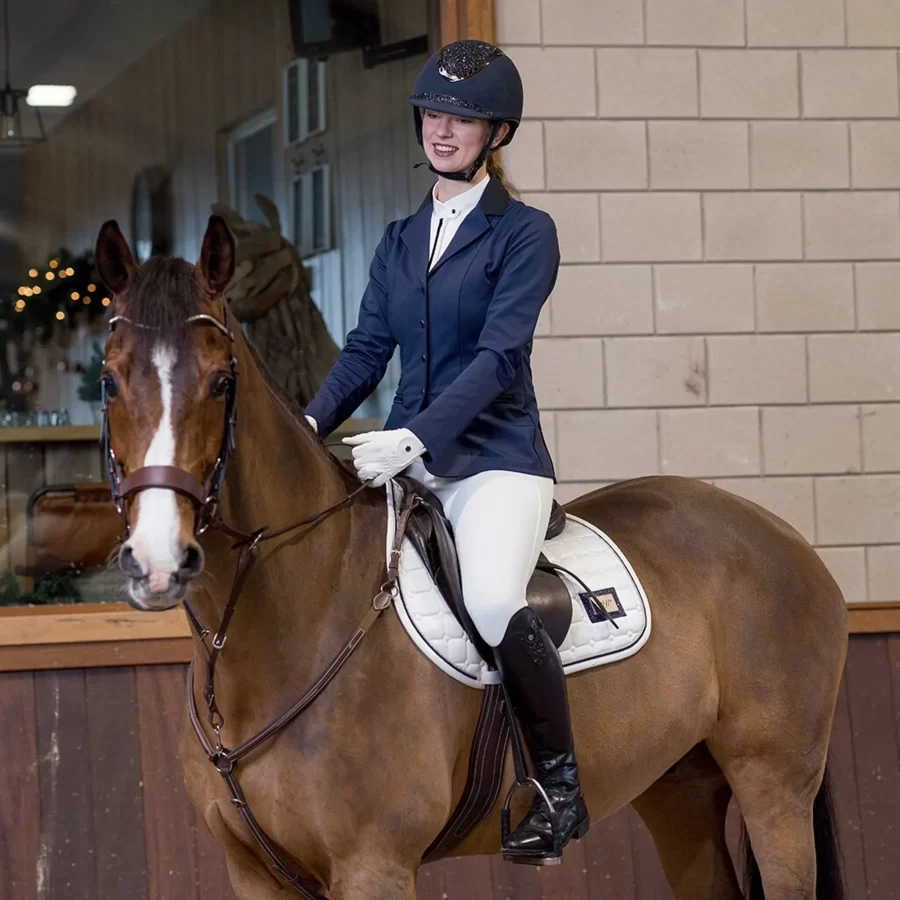Tips for Choosing Casual Horse Riding Clothes
When you’re choosing casual horse riding clothes, comfort meets style. Start with fabrics that breathe and move with you. Think cotton blends, moisture-wicking materials, and lightweight layers. Next, consider durability. Clothes must withstand the rigors of riding and frequent washing. Look for reinforced seams and high-quality fastenings.
Fit is key for any equestrian attire. Ensure that clothes aren’t too tight or too loose. They should allow freedom of movement without getting caught in the saddle. Also, choose colors and patterns that reflect your personal style while being practical. Darker hues hide dirt better, while bright colors keep you visible.
For safety, merge fashion with function. Opt for snug-fitting clothes over loose garments to avoid entanglements. Check if the clothes have any reflective elements if you plan to ride during dusk or dawn. Always review the dress code of your riding location. Some places favor more traditional attire, even in casual settings.
Lastly, think about layering. Layering enables you to adjust to changing temperatures throughout your ride. Include a base layer, a mid-layer, and an outer layer that can be easily added or removed as needed. Remember, the right casual horse riding clothes enhance the experience, balancing your comfort, safety, and style.
 Key Elements of Casual Riding Gear
Key Elements of Casual Riding Gear
When assembling your casual horse riding clothes, focus on key pieces that ensure comfort and functionality. Here are the essentials:
Pants or Jodhpurs
Select Jodhpurs or breeches that provide a non-slip grip for security in the saddle. They should be stretchy to offer full range of motion.
Riding Shirt or Top
Choose a shirt that’s breathable and sweat-absorbent. Go for a close-fitting design to prevent snags but avoid overly tight clothes that restrict movement.
Outerwear
Include a versatile jacket or vest that’s both wind-resistant and warm. Make sure it’s fitted well enough that it won’t flap around and spook the horse.
Gloves
Gloves protect your hands from blisters and offer a better reign grip. Look for pairs with reinforced areas where the reins make contact.
Helmet
Safety first—never ride without a helmet. It should be ASTM/SEI certified, comfortably fitting, and properly ventilated.
Each piece of casual horse riding clothes must serve its purpose without sacrificing comfort or safety. With these key items, you’ll be well on your way to a pleasant riding experience.
Safety Considerations for Horse Riding Outfits
When selecting casual horse riding clothes, don’t overlook safety. It’s as crucial as comfort and style. Here’s what to focus on for safety:
Choose Clothes that Reduce Risk
Go for snug fits, not baggy clothes that might catch in the saddle or gear. This reduces the risk of accidents.
Opt for Safety-Enhanced Materials
Some clothes come with built-in safety features, like reflective materials for visibility. Choose these, especially if you ride in low light.
Always Wear a Certified Helmet
Your head needs protection. Ensure you wear a helmet that meets safety standards like ASTM/SEI certification.
Protective Footwear is a Must
Wear boots with a small heel to prevent your foot from slipping through stirrups. Avoid open-toed shoes or sneakers.
Consider a Safety Vest
A fitted safety vest can shield your torso in case of falls. It’s especially recommended for novice riders or when trail riding.
Safety in horse riding attire shouldn’t be an afterthought. With these considerations in mind, you’re set for a safer ride.
Top Must-Have Items for Every Casual Rider
Every casual rider must prioritize certain items. These ensure safety, comfort, and a smooth riding experience. Let’s explore the key essentials:
Quality Riding Boots
Good boots are non-negotiable. Look for a sturdy pair with a small heel. They should fit well and support your ankles.
Comfortable Riding Pants
Invest in high-quality riding pants or jodhpurs. They should be flexible and durable. A good fit is also essential.
Breathable Riding Shirt
Choose a shirt that wicks away moisture and is breathable. A snug fit is best to avoid snags.
Versatile Jacket or Vest
Select a wind-resistant jacket or vest. It should keep you warm and not flutter during rides.
Well-Fitting Gloves
Gloves must offer a good rein grip and hand protection. Ensure they have padded areas for comfort.
ASTM/SEI Certified Helmet
Never compromise on a helmet. It should fit well and provide excellent ventilation.
Safety Vest
Consider a safety vest for extra protection. This is vital for new riders or uneven terrain.
Gathering these top items will prepare you for any casual horse riding adventure. Remember, each item plays a role in your ride’s overall quality. With these must-haves, you are ready to ride safely and in style.
Footwear Options for Casual Horse Riding
When considering your casual horse riding clothes, footwear is a key component. It’s not just about style; the right boots ensure safety and comfort during your ride. Here are the footwear options to consider:
Paddock Boots
For versatility and comfort, choose paddock boots. They usually have a small heel which helps prevent your foot from slipping through the stirrup. Look for ones that lace up or zip for easy wear and a secure fit.
Tall Riding Boots
Tall boots provide more coverage and support. They protect your lower legs from chafing against the saddle. Make sure they fit snugly and do not restrict your movement.
Western Boots
If you prefer western riding, opt for western boots. They have a higher heel, and the design suits the demands of western saddles. Pick a comfortable pair with proper ankle support.
Half Chaps
Combine them with paddock boots for extra protection. Half chaps cover the lower leg, offering comfort and preventing rubbing from stirrup leathers.
Riding Sneakers
For a more casual look, riding sneakers are an option. Ensure they have adequate heel support and are suitable for riding. However, they might not provide as much protection as boots.
To sum it up, your choice in footwear should reflect your riding style, comfort needs, and safety considerations. Each option comes with its benefits, so choose based on what works best for you and your horse riding activities.
Accessorizing Your Horse Riding Attire
Accessorizing is an excellent way to personalize your casual horse riding clothes. Choose practical items that also elevate your look. Here is how to accessorize smartly and stylishly:
Belts
Belts are functional and fashionable. They can secure pants and add a touch of style. Pick a belt that fits well without digging into your waist.
Scarves
Scarves protect your neck from sun and wind. Choose lightweight materials and avoid long, loose ends that could tangle.
Socks
High-quality socks cushion your feet inside boots. Opt for fabrics that wick moisture away to keep feet dry.
Hat
A wide-brimmed hat shields your face from the sun. But remember, it’s no substitute for a riding helmet when on horseback.
Sunglasses
Sunglasses protect your eyes from glare and dust. Ensure they fit snugly and won’t slip off during your rides.
Watches
A durable watch helps you keep track of time. Go for one that’s shock-resistant and can withstand outdoor elements.
Each accessory should add to your riding experience without hindrance. Keep safety in mind when choosing additional items to avoid any risk. With these tips, your casual horse riding attire will be both practical and envy-inducing.
Seasonal Casual Riding Clothes Suggestions
Adjusting your casual horse riding clothes to the season is vital for comfort and safety. As seasons change, so do temperature and weather conditions, requiring different apparel strategies. Here’s what to consider when dressing for each season.
Spring
Spring weather can be unpredictable with a mix of warm days and chilly winds. Layering is key. Start with a breathable base layer. Add a fleece as your mid-layer for warmth. Top with a light, waterproof jacket for sudden showers. Choose gloves that aren’t too heavy but offer sufficient protection.
Summer
Beat the heat of summer rides with lightweight, breathable fabrics. Look for moisture-wicking tops to keep sweat away. Riding tights are cooler than heavy pants. A ventilated helmet can prevent overheating. Don’t forget UV-protective sunglasses and apply sunscreen.
Fall
Fall brings cooler temperatures. A long-sleeve shirt made of warm, breathable fabric is ideal. Consider a heavier jacket or vest. For windier days, a scarf can protect your neck without risk of catching. Choose gloves with a little more insulation.
Winter
Winter demands layers to stay warm. Start with thermal underwear. Add insulated breeches and a thick fleece mid-layer. A heavy coat that’s waterproof and windproof is a must. Insulated, waterproof boots will keep your feet warm. Thick gloves and a woolen hat under your helmet will help retain heat.
By tailoring your casual horse riding clothes to the season, you ensure year-round riding enjoyment. Focus on the functionality of each garment for weather appropriateness, while maintaining a casual and stylish look. Always remember: Safety should never be compromised for the sake of fashion.
Maintenance and Care of Casual Riding Gear
To keep your casual horse riding clothes in top shape, routine maintenance and proper care are essential. Regular upkeep not only prolongs the life of your gear but also ensures it remains safe and comfortable for your rides. Here are some simple tips for taking care of your casual riding wardrobe:
Cleaning Instructions
Wash your riding clothes according to the fabric care labels. Most pieces, like shirts and pants, are machine washable. Use a gentle cycle with cold water to prevent shrinking or fading. Use mild detergents that are safe for performance fabrics. For tougher stains, pre-treat them before washing.
Drying Techniques
Avoid using a high-heat setting on your dryer as it can damage the fabric. Instead, opt for air-drying or use a low-heat tumble dry setting. Ensure that protective gear like helmets are left to air dry, as heat may compromise their structure.
Storage Solutions
Store your gear in a dry, cool place away from direct sunlight that can fade colors. Use breathable garment bags for items like jackets and vests. Keep boots upright with boot trees or shapers to maintain their form. Make sure everything is clean before storing to prevent mildew or odors.
Gear Inspection
Regularly inspect your gear for any signs of wear and tear, especially safety items like helmets and boots. Check seams, buckles, and zippers for damage, and replace any gear that no longer provides adequate protection or support. Safety should always be your top priority.
Keeping your casual horse riding clothes clean, dry, and well-maintained not only makes them more pleasant to wear but also helps you look good and stay safe. A little time spent on care goes a long way in ensuring a great riding experience.

